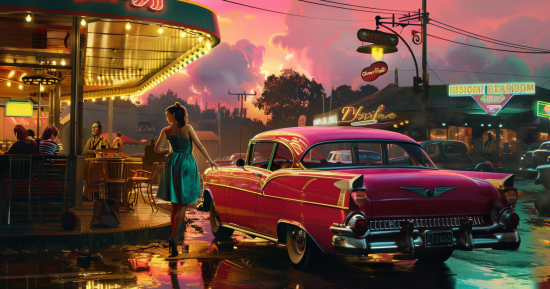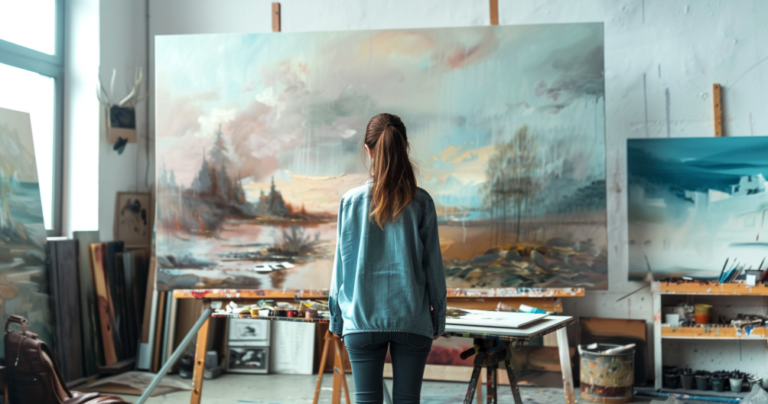Coffee art, often called latte art, is a popular and enjoyable way to enhance your coffee-drinking experience. It combines the rich taste of your favorite coffee with the visual appeal of intricate designs, making each cup a unique work of art. With some practice and patience, you, too, can master the techniques to create beautiful coffee art in the comfort of your own home.
Coffee Art
Starting your journey into coffee art may seem intimidating, especially when you see the jaw-dropping designs created by professional baristas. However, there are a few basic designs that beginners can learn and build upon, such as the heart, rosetta, and tulip. All you need is an espresso machine, a milk frother, and a bit of determination to get started. Remember, practice makes perfect, so don’t be discouraged if your first few attempts don’t turn out exactly as you envisioned.
Once you understand the basics of coffee art, you may experiment with different techniques and textures to create your unique designs. It’s essential to have fun with the process and engage in a bit of trial and error. In the end, you’ll be rewarded with a visually stunning and delicious cup of coffee that brightens your day and impresses your friends and family. How To Do Latte Art
Understanding Coffee Art

History of Coffee Art
Coffee art has a rich history that traces back to the 1980s in Italy, where talented baristas began pouring simple designs into their lattes. With time, the art form evolved and became popular globally, showcasing the creativity of coffee enthusiasts.
Nowadays, coffee art takes various forms, from latte art to coffee painting. The skills required in this beautiful craft reflect a barista’s dedication to creating a delightful cup of coffee, both in taste and appearance.
Types of Coffee Art
There are two main types of coffee art:
- Latte Art: It’s the most common type, where steamed milk is poured into espresso, forming patterns and designs. The key to mastering latte art is to achieve the perfect milk texture. Some popular latte art designs include hearts, tulips, and rosettas. To try your hand at latte art, begin by spinning the milk to around 100°F (37°C) and practice pouring your desired design.
- Coffee Painting: This form of coffee art involves using coffee as a medium for painting and creating artwork. Artists use coffee to stain pieces of paper or canvas, capturing various shades depending on the coffee’s concentration. You can experiment with this technique by dipping your brush into a coffee concentrate and drawing on the canvas.
To start making your own coffee art, begin with whichever type appeals to you most. With practice and patience, you’ll discover the delight in transforming your cups of coffee into artistic masterpieces. However, remember that the process requires time to master, so don’t be discouraged by initial challenges; instead, enjoy your journey into the world of coffee art.
Preparing the Perfect Base

Choosing Your Coffee
To create beautiful coffee art, you need to start with the right coffee beans. Look for high-quality beans that have been freshly roasted, as they will produce the best flavor and consistency for your espresso base. It’s also important to choose a coffee with a good balance of acidity, body, and sweetness. Some popular options include Arabica and Robusta beans, each offering their unique taste and characteristics. Don’t be afraid to experiment with different blends to find the one that suits your taste best.
Espresso Brewing Techniques
Now that you have chosen your coffee beans, it’s essential to brew the perfect espresso shot as a foundation for your coffee art. Here are some steps to consider:
- Grind size: Use a fine grind, similar to the consistency of powdered sugar, for a smooth, rich shot of espresso. An even grind is crucial to ensure the water flows through the coffee grounds evenly extracting the flavors.
- Dosing: Measure the right amount of coffee grounds for your espresso machine, typically around 18-20 grams for a double shot. Consistency in your dosing will help you achieve the desired taste every time.
- Tamping: Tamp the coffee grounds in your portafilter evenly and firmly to create a uniform espresso puck. This will ensure that water flows through the coffee evenly, extracting all the flavors.
- Temperature: Maintain a water temperature between 195°F and 205°F (90°C and 96°C) for optimal extraction. This is the ideal range to extract the best flavors from your coffee.
- Time: Aim for an espresso shot that lasts around 25 to 30 seconds, resulting in a silky and rich shot of espresso. If your shot is running too slow, try adjusting your grind setting or tamping pressure; if it’s too fast, do the opposite.
Once you’ve mastered the art of making the perfect espresso shot, you can start practicing your milk steaming and pouring techniques to create stunning coffee art. Remember to have fun and be patient; it takes time and practice to become a skilled latte artist. Good luck!
Mastering Milk Frothing

Types of Milk
When it comes to making coffee art, the type of milk you use can have an impact on the final outcome. There are various options to choose from, such as whole milk, non-dairy milk, non-fat milk, and skim milk. Each of these options can work for creating great latte art, but it’s important to note that the milk’s consistency and fat content can affect the frothing process.
- Whole milk provides a rich, creamy texture, making it an ideal choice for most coffee enthusiasts.
- Non-dairy milk alternatives like almond, soy, and oat milk can also be used. However, their behavior during frothing might vary depending on the brand or formula.
- Non-fat or skim milk are suitable for those who want a lighter, less creamy option. They can still create froth with micro-bubbles, but might not have the same velvety texture as whole milk.
Frothing Techniques
Consistency and temperature are key factors in frothing milk for coffee art. Follow these steps to create the perfect milk froth:
- Pour milk into a pitcher: You’ll need a jug, or a pitcher, to hold the milk during frothing. Ensure the milk is cold, as it will expand better during the steaming process.
- Steam the milk: Position the wand of your espresso machine at an angle, slightly off-center in the milk. Turn on the steam wand, allowing a steady flow of steam to enter the milk.
- Create a whirlpool: Maintain a consistent, gentle whirlpool by keeping the wand at the same angle. This will help develop a silky, velvety microfoam texture with tiny bubbles.
- Monitor the temperature: Use a thermometer or the touch method to ensure the milk reaches the ideal temperature, which is around 150°F (65°C). When the milk reaches this temperature, quickly turn off the steam wand and remove the pitcher from the wand.
With your frothed milk ready, you can now pour it into your espresso shot and start practicing your coffee art designs. Have fun experimenting and perfecting your skills!
Creating Your Art

Basic Pouring Techniques
To begin your coffee art journey, start by learning the basic pouring techniques. First, ensure you have a well-steamed milk with a velvety, smooth texture. For detailed steps on how to steam milk properly, check out this beginner’s guide.
- Position your cup: Hold your cup at a slight angle, around 20 degrees. This will help the milk flow smoothly and create beautiful patterns.
- Start pouring: Pour the milk into your coffee from a decent height (around 2-3 cm). This helps the milk smoothly submerge beneath the coffee.
- Lower the pitcher: As your cup fills, gradually lower the pitcher closer to the coffee, increasing the pouring speed. The milk will begin to create a pattern on the surface.
- Wiggle and create: Gently wiggle the pitcher side to side. This creates a zig-zag pattern, like a heart or flower design.
Remember to practice and be patient as you develop your skills.
Advanced Coffee Art Designs
Once you’ve mastered the basic pouring techniques, you can start experimenting with advanced coffee art designs. Two popular designs are the Rosetta and the Tulip. You can learn how to create them by following the steps below:
Rosetta
- Use the basic pouring technique to pour the milk into your coffee.
- When the coffee is about halfway full, start wiggling the pitcher more rapidly while slowly moving backward.
- At the edge of the cup, lift the pitcher slightly and pour a thin stream of milk through the middle of the design to create a stem for the Rosetta.
Tulip
- Begin with the basic pouring technique, filling the cup about 1/3 of the way.
- Move the pitcher slightly closer to the coffee surface and wiggle it, creating a small circle.
- Gradually pour more circles on top of each other, moving back as you pour to stack the circles and create the tulip shape.
As you become more comfortable with these advanced techniques, you can experiment and create your own unique designs. Just remember that practice is key, and soon enough, you’ll be impressing friends and family with your stunning coffee art.
FAQ – Coffee Art
What do I need to start making coffee art?
You’ll need freshly brewed espresso, steamed milk, a pitcher for pouring, and a tool like a toothpick for details.
Is making coffee art difficult?
It requires practice to pour steadily and create designs, but with patience, you can learn the basics.
Can I make coffee art without an espresso machine?
While challenging, you can use strong coffee and froth milk manually to attempt simpler designs.
What are some basic coffee art designs?
The heart, rosetta, and tulip are classic designs that beginners can start with.






